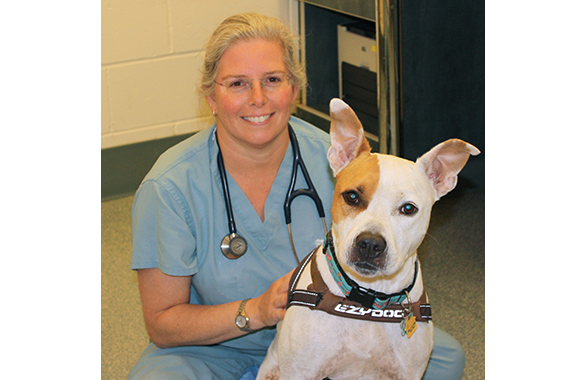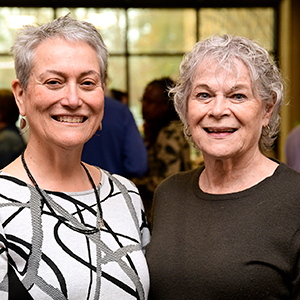Our pets share our environment. They sleep in our beds, drink our water, and play on our lawns. As a result, they are exposed to many of the same environmental agents that are known to affect human health. And because companion animals acquire a similar spectrum of disease as people — on a much shorter time-scale — they can provide advance warning of human health risks.
A National Academies of Sciences, Engineering, and Medicine (NASEM) workshop held Dec. 1-3 examined the potential role of pets as sentinels of human-relevant environmental exposures that may influence aging and cancer.
 The event was hosted by the National Academies’ National Cancer Policy Forum in collaboration with the Forum on Aging, Disability, and Independence and the Standing Committee on the Use of Emerging Science for Environmental Health Decisions. (Photo courtesy of Shift Drive / Shutterstock.com)
The event was hosted by the National Academies’ National Cancer Policy Forum in collaboration with the Forum on Aging, Disability, and Independence and the Standing Committee on the Use of Emerging Science for Environmental Health Decisions. (Photo courtesy of Shift Drive / Shutterstock.com)“We want to challenge the emerging field of exposure science because we all know that we are not dealing with just one chemical at a time or just one point in our lives,” said NIEHS Scientist Emeritus Linda Birnbaum, Ph.D., who chaired the workshop and the planning committee.
She told attendees that exposure data collected on pets across their lifespan can provide important insights that complement traditional toxicological research, such as cell-based studies and laboratory animal testing. The event drew dozens of experts to NASEM headquarters in Washington, D.C., with more than 500 people joining virtually.
Canary in the coal mine
 Rabinowitz said that although only a few studies examining canine sentinels and cancer have been conducted, most show some association between environmental exposures and the disease. (Photo courtesy of Peter Rabinowitz)
Rabinowitz said that although only a few studies examining canine sentinels and cancer have been conducted, most show some association between environmental exposures and the disease. (Photo courtesy of Peter Rabinowitz)The classic example of animals as sentinels of environmental hazards is the canary in the coal mine, noted Peter Rabinowitz, M.D., from the University of Washington.
He said canaries possess three key qualities that make them good sentinels: greater susceptibility, greater exposure to the hazard, and shorter latency, meaning that compared to humans, it takes much less time for the birds to become ill following an exposure. If canaries in a mine became sick from carbon monoxide or other toxic gases, workers had time to put on respiratory masks before they got sick themselves.
Similarly, dogs can serve as useful sentinels for cancer in humans, according to Rabinowitz. He noted that canines are susceptible to the effects of carcinogens, pointing out that there is a high incidence of cancer in the animals. Dogs spend more time at home than people, at least in pre-pandemic days, and they come into closer contact with their environment. And their lifespan is much shorter than that of humans.
“Studies of dogs as sentinels have untapped potential for detecting and better understanding environmental carcinogens, which can be difficult to study in humans,” said Rabinowitz.
Such research could help scientists detect both new and known carcinogens and understand patterns of exposure, which may enhance human cancer prevention, he added.
Companion animals, companion studies
 Ellison provided attendees with a 20-minute overview of the current state of knowledge about environmental exposures and cancer. (Photo courtesy of Lisa Helfert)
Ellison provided attendees with a 20-minute overview of the current state of knowledge about environmental exposures and cancer. (Photo courtesy of Lisa Helfert)
Death rates are declining for many forms of cancer, thanks to advances in early detection and treatment. However, the incidence of certain cancers — such as skin, liver, kidney, and early-onset colorectal cancers — are increasing, according to Gary Ellison, Ph.D., acting director of the NIEHS Division of Extramural Research and Training. Ellison said that he believes environmental factors are contributing to that increase.
“However, the environment is incredibly complex, and there are several challenges in researching environmental exposures,” he said. Ellison noted that more work is needed to address this complexity, which involves types and sources of exposures, spatial and temporal aspects of exposures, and effects on biological pathways.
He described the National Cancer Institute (NCI) Cohort Consortium, which includes seven million human study participants from 15 countries and four continents, as a resource that will help scientists explore how the environment influences cancer. Ellison also discussed new cohorts — part of a collaboration between NCI and NIEHS — that will enable researchers to study how emerging and important environmental exposures may affect cancer risk.
Several participants, including Birnbaum, suggested that valuable knowledge could be gained by incorporating companion animals into that long-term research. Prospective studies of dogs already are underway, such as the Golden Retriever Lifetime Study and the Dog Aging Project.
(Marla Broadfoot, Ph.D., is a contract writer for the NIEHS Office of Communications and Public Liaison.)

According to Birnbaum, the workshop was informed by the One Health framework, which focuses on the interconnectedness of animals, humans, and the environment. (Photo courtesy of Steve McCaw / NIEHS)











